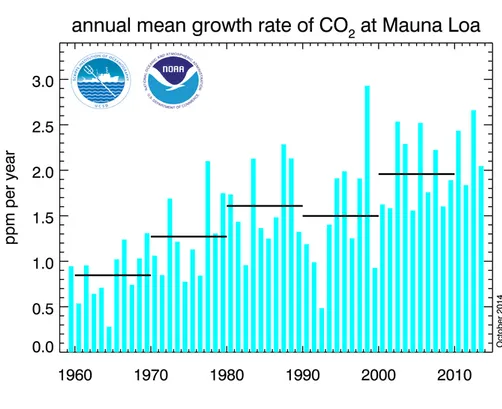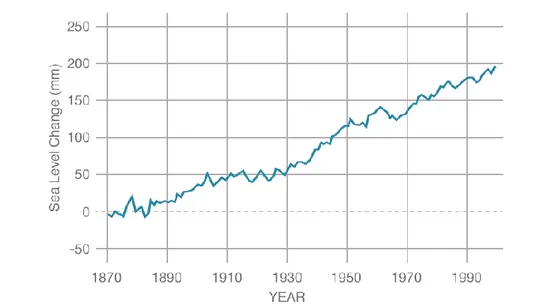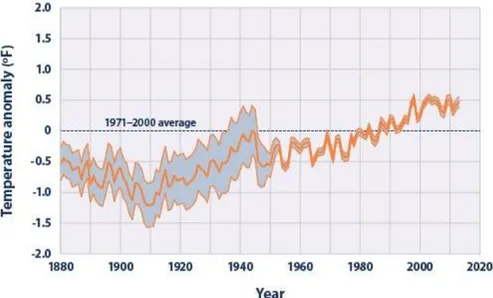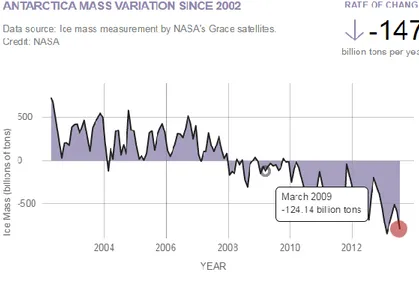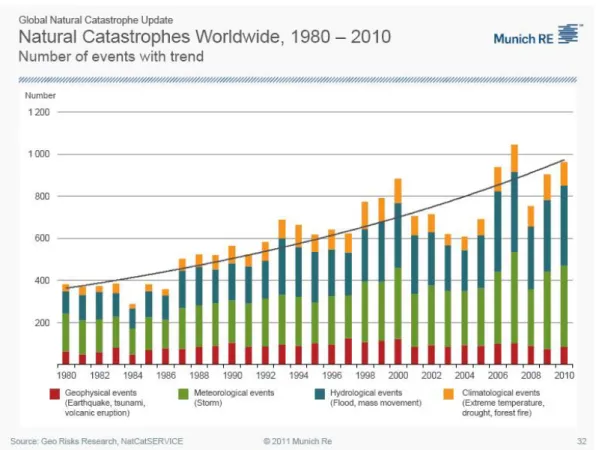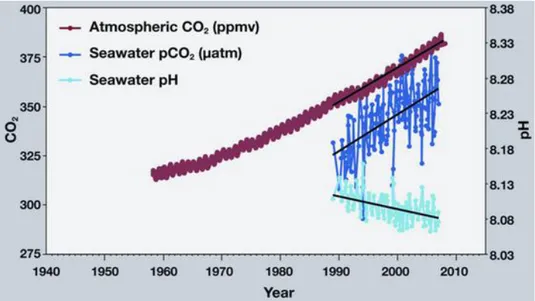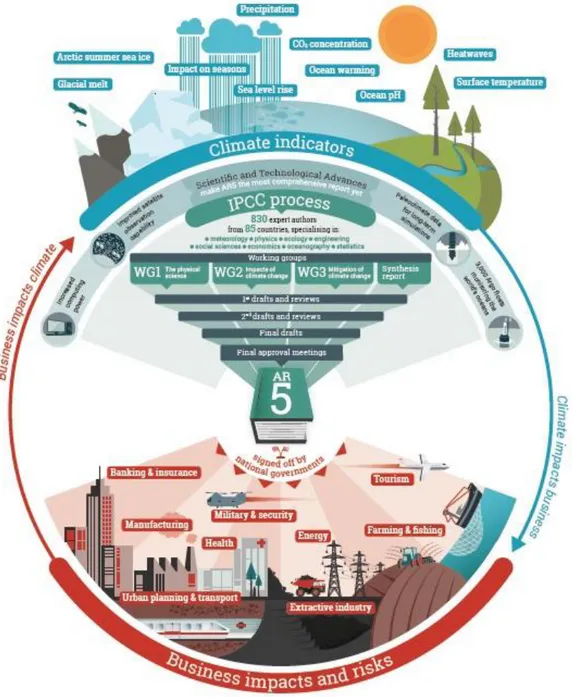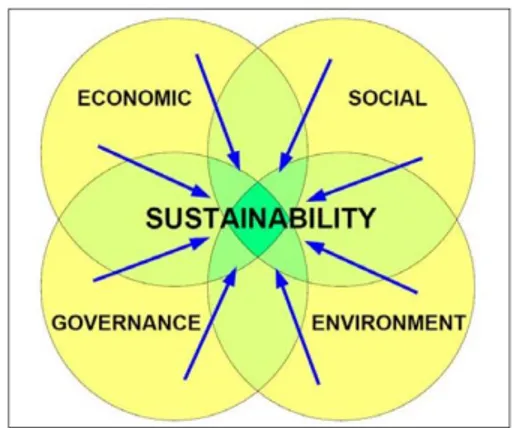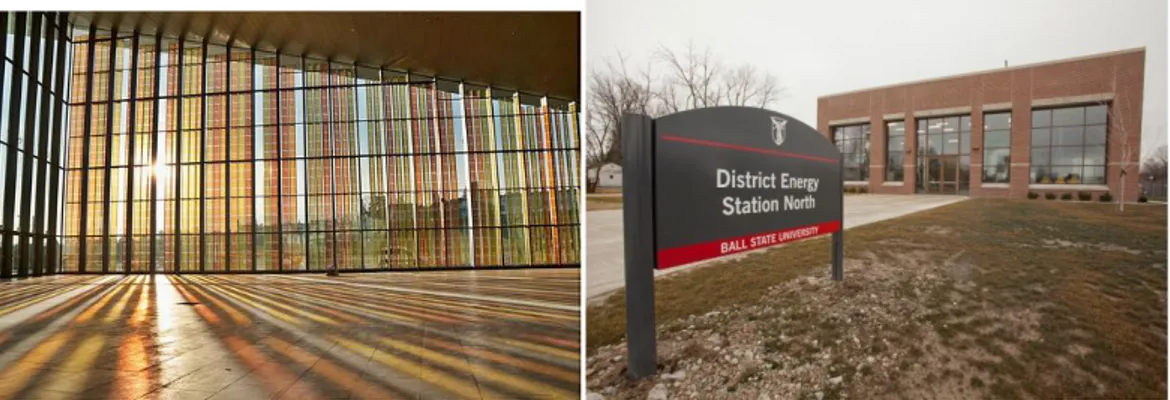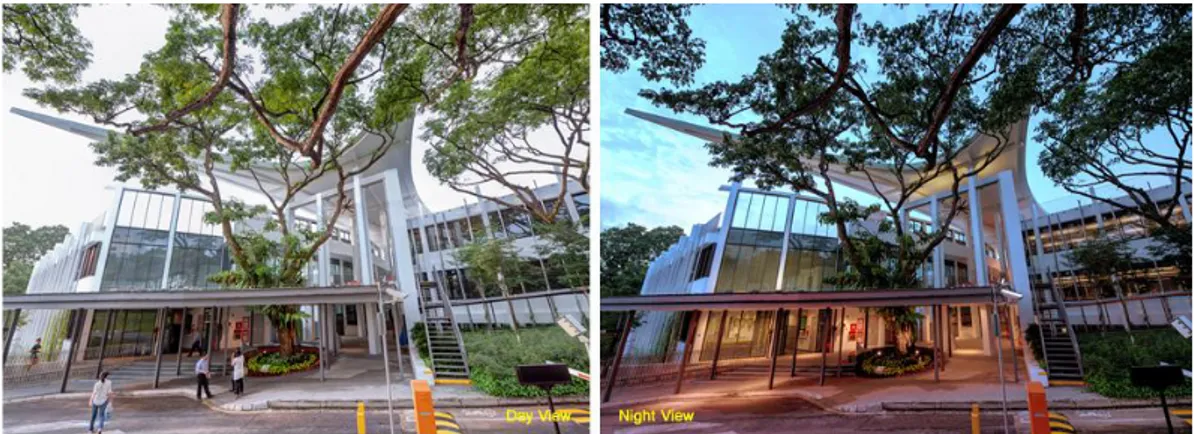ALMA MATER STUDIORUM - UNIVERSITÀ DI BOLOGNA
SCUOLA DI INGEGNERIA E ARCHITETTURA
DIPARTIMENTO DI INGEGNERIA CIVILE, CHIMICA, AMBIENTALE E DEI MATERIALI
CORSO DI LAUREA MAGISTRALE IN INGEGNERIA GESTIONALE
TESI DI LAUREA
in
Valorizzazione delle risorse primarie e secondarie
Investigating strategies and indicators for Sustainable campus:
Comparison and synergies between University of Bologna and
Delft University of Technology
CANDIDATO RELATORE:
Martina Spada Chiar.ma Prof. Alessandra Bonoli
CORRELATORI: Ing. Francesca Cappellaro Prof. Gertjan de Werk Prof. Arturo Bellucci
Anno Accademico 2013/14 Sessione III
3 ABSTRACT
Sustainable development is one of the biggest challenges of the twenty fist-century. Various university has begun the debate about the content of this concept and the ways in which to integrate it into their policy, organization and activities. Universities have a special responsibility to take over a leading position by demonstrating best practices that sustain and educate a sustainable society. For that reason universities have the opportunity to create the culture of sustainability for today’s student, and to set their expectations for how the world should be. This thesis aim at analyzing how Delft University of Technology and University of Bologna face the challenge of becoming a sustainable campus. In this context, both universities have been studied and analyzed following the International Sustainable Campus Network (ISCN) methodology that provides a common framework to formalize commitments and goals at campus level. In particular this work has been aimed to highlight which key performance indicators are essential to reach sustainability as a consequence the following aspects has been taken into consideration: energy use, water use, solid waste and recycling, carbon emission. Subsequently, in order to provide a better understanding of the current state of sustainability on University of Bologna and Delft University of Technology, and potential strategies to achieve the stated objective, a SWOT Analysis has been undertaken. Strengths, weaknesses, opportunities and threats have been shown to understand how the two universities can implement a synergy to improve each other. In the direction of framing a “Sustainable SWOT” has been considered the model proposed by People and Planet, so it has been necessary to evaluate important matters as for instance policy, investment, management, education and engagement. Regarding this, it has been fundamental to involve the main sustainability coordinators of the two universities, this has been achieved through a brainstorming session.
Partnerships are key to the achievement of sustainability. The creation of a bridge between two universities aims to join forces and to create a new generation of talent. As a result, people can become able to support universities in the exchange of information, ideas, and best practices for achieving sustainable campus operations and integrating sustainability in research and teaching. For this purpose
4
the project "SUCCESS" has been presented, the project aims to create an interactive European campus network that can be considered a strategic key player for sustainable campus innovation in Europe.
Specifically, the main key performance indicators have been analyzed and the importance they have for the two universities and their strategic impact have been highlighted. For this reason, a survey was conducted with people who play crucial roles for sustainability within the two universities and they were asked to evaluate the KPIs of the project. This assessment has been relevant because has represented the foundation to develop a strategy to create a true collaboration. Subsequently, three strategies have been suggested, based on the importance that each KPI has for the universities, with detailed regard on commitment, responsibility, authority, accountability, and sharing of resources, risks, and rewards.
Finally, through the analysis of one of the first SUCCESS project goal, concerning the establishment of a transition team in each campus, a viable example to begin a transition towards a sustainable university is proposed.
5 ABSTRACT
Lo sviluppo sostenibile rappresenta una delle più grandi sfide del XXI secolo. Diverse università hanno già da tempo intrapreso il dibattito verso questo tema ed hanno iniziato a studiare il modo in cui integrarlo nella politica universitaria, nell'organizzazione e nelle attività. Le università possiedono una speciale responsabilità, poiché detengono una posizione di leadership, attraverso la dimostrazione di best practice sono in grado di sostenere ed educare una società sostenibile. Le università hanno di conseguenza la possibilità di creare una cultura di sostenibilità per gli studenti di oggi, e di impostare le loro aspettative su come il mondo dovrebbe essere.
L’obiettivo di questa tesi è di analizzare come Delft University of Technology e l'Università di Bologna affrontano questa sfida al fine di diventare un campus sostenibile. In tale contesto, entrambe le università sono state studiate secondo la metodologia proposta dall’International Sustainable Campus Network, che fornisce un quadro comune per formalizzare impegni e obiettivi a livello di campus. In particolare, questo lavoro evidenzia quali key performance indicators siano essenziali per protendere verso la sostenibilità, di conseguenza sono stati studiati i seguenti aspetti: uso dell’energia, uso dell’acqua, rifiuti e riciclaggio ed infine emissioni dannose.
Di conseguenza, per permettere una migliore comprensione dello stato dell’arte e delle possibili strategie implementabili per le due università è stata svolta un’analisi SWOT. Punti di forza, punti di debolezza, opportunità e minacce sono stati esaminati con l’obiettivo di capire come le università possano sviluppare un azione sinergica per migliorarsi l'un l'altra. Per ottenere un’analisi “SWOT sostenibile” è stato considerato il modello proposto da People and Planet, che ha permesso di valutare diversi importanti aspetti tra cui politica, investimenti, gestione ed educazione. È stato quindi necessario coinvolgere i principali coordinatori della sostenibilità delle due università e ciò è stato attuato attraverso un brainstorming.
La partnership rappresenta un elemento chiave per ottenere la sostenibilità. La creazione di un ponte tra le due università rappresenta quindi un modo per unire le forze e creare una nuova generazione di talenti. Persone in grado di sostenere lo
6
scambio d’informazioni, idee e best practice con l’obiettivo di operare verso un campus sostenibile sia nella ricerca che nell’insegnamento.
A tal proposito, in questa tesi è presentato il progetto "SUCCESS", il quale mira alla creazione di una rete europea di campus interattivi, che rappresenta una chiave strategica per le innovazioni di campus sostenibili in Europa. In particolare sono stati analizzati i principali key performance indicators ed è stata messa in evidenza l’importanza che ricoprono per le due università e il loro impatto strategico. Per questo scopo, è stato condotto un sondaggio che ha visto coinvolte le persone che ricoprono un ruolo fondamentale per la sostenibilità, ed è stato chiesto loro di valutare i KPI del progetto in ottica d’importanza. Questa valutazione è stata cruciale perché ha rappresentato la base per realizzare una strategia di collaborazione. Successivamente, sono state proposte tre strategie, basate sull’importanza che ogni KPI ricopre per le due università, con un focus dettagliato verso impegno, responsabilità, autorità, condivisione delle risorse, rischi e benefici.
Infine, attraverso l'analisi del primo sotto-obiettivo del progetto “SUCCESS”, ovvero la creazione di un transition team in ogni campus, viene proposto un possibile esempio di come intraprendere una transizione verso un’università sostenibile.
7
Table of content
Table of content ... 7
1 Introduction ... 11
2 Environmental changes and their causes ... 15
2.1 Evidence of climate change ... 16
1. 2.1.1Sea level rise ... 18
2. 2.1.2Global temperature rise ... 19
3. 2.1.3Warming oceans ... 19
4. 2.1.4Declining Arctic sea ice, glacial retreat and decreased snow cover... 20
5. 2.1.5Extreme events ... 21
6. 2.1.6Ocean acidification ... 22
2.2 Human impact on the environment ... 22
7. 2.2.1Water pollution and water scarcity ... 22
8. 2.2.2Air pollution ... 23
9. 2.2.3Solid and hazardous waste pollution ... 25
10. 2.2.4Soil degradation ... 25
11. 2.2.5Deforestation ... 25
12. 2.2.6Loss of biodiversity ... 26
2.3 Future climate change ... 27
3 Sustainability and sustainable development ... 29
3.1 The four capitals and the four bottom lines ... 32
4 The role of university ... 34
4.1 Responsibility of university ... 35
4.2 Sustainable university ... 37
13. 4.2.1Sustainability issues, risks and associated challenges in universities ... 38
14. 4.2.2Exemplary cases ... 41
4.3 Sustainable University Network ... 43
15. 4.3.1International Sustainable Campus Network (ISCN) ... 43
16. 4.3.2International Alliance of Research Universities (IARU) ... 47
17. 4.3.3Sustainable Campus Launching Customer example ... 48
5 How Delft University of Technology and University of Bologna face the challenge of sustainability ... 50
5.1 Methodology ... 50
8
5.2 Delft University of Technology ... 54
19. 5.2.1Energy ... 55
20. 5.2.2Water ... 61
21. 5.2.3Waste and Recycling ... 63
22. 5.2.4CO₂ Emission ... 66
5.3 University of Bologna ... 69
23. 5.3.1Energy ... 70
24. 5.3.2Water ... 77
25. 5.3.3Waste and Recycling ... 78
26. 5.3.4CO₂ Emission ... 82
6 SWOT ANALYSIS: Strengths, Weaknesses, Opportunities and Threats ... 83
6.1 Environmental Sustainability: Policy and Strategy ... 85
6.2 Human Resources for Sustainability ... 86
6.3 Environmental Auditing & Management Systems ... 86
6.4 Ethical Investment ... 86
6.5 Carbon Management ... 87
6.6 Staff and Student Engagement ... 87
6.7 Education for Sustainable Development ... 88
6.8 SWOT Analysis Delft University of Technology ... 89
27. 6.8.1Strengths ... 89
28. 6.8.2Weaknesses ... 94
29. 6.8.3Opportunities ... 95
30. 6.8.4Threats ... 96
6.9 SWOT Analysis University of Bologna ... 97
31. 6.9.1Strengths ... 97
32. 6.9.2Weaknesses ... 101
33. 6.9.3Opportunities ... 102
34. 6.9.4Threats ... 103
7 How and why should we create a bridge between TU Delft and UNIBO ... 105
7.1 Seven concept for successful collaboration ... 105
7.2 The sustainable role of e-collaboration ... 107
7.3 Transition Management Approach ... 109
7.4 A means to reach the goal: Success project – Synergetic University Campuses boosting climatE innovationS into Society ... 114
9
35. 7.4.1Insight into Key Performance Indicators ... 117
36. 7.4.2Metric ... 120
37. 7.4.3How the establishment of a transition team on each campus can help to achieve crucial KPI ... 127
8 Conclusion ... 129
9 Bibliography ... 131
11
1 Introduction
Climate change has long-since recognized as the major preponderant environmental issue of our time. At the same time, it can be the greatest challenge facing our society. Really, the transition toward a low carbon society is a long process involving not only technology system but also the whole society. Therefore a whole-system approach is required involving actors and multi-societal dimensions. In the process to invent and develop sustainable system innovation, the role of campuses is crucial in order to enhance the transition towards a low-carbon society.1
“Higher education institutions bear a profound, moral responsibility to increase the awareness, knowledge, skills, and values needed to create a just and sustainable future” (Cortese, 2003)
The citation above emphasizes that universities should not ignore the increasing environmental concerns. Universities need to step up and serve as an example to society at large by transforming their institutions and their campuses into organizations embracing sustainability. Since the 1990s, this statement has been adopted in many declarations, moving universities slowly in the direction of integrating sustainability in their mission.2
The notion of integrating sustainability can be interpreted in a number of ways. Many universities are now showcasing sustainability initiatives by highlighting project-based campus operation improvements to reduce ecological footprint. In this latter approach sustainability is embedded in education, research, and knowledge transfer (outreach); it combines its core businesses with the support system of operations and administration.
In my thesis, I illustrate the case study of two universities, the largest and oldest Dutch public technical university: Delft University of Technology; and the oldest existing universities in the world: the Italian University of Bologna.
1
Cappellaro, F. de Werk, G., Nagel, J., Bonoli A., Spada, M. Sustainable Campus Initiatives for boosting Low Carbon Innovation. Journal of Cleaner Production (approved)
2
12
I have chosen these universities because the first one is the university where I spent my engineering studies for five years, the second one is the university where I spent a research period of five months. At Delft University of Technology I could study the topic of sustainable university thanks to the involvement in the pathfinder project ‘Sustainable Campus Launching Customer’ (SCLC) where I could give my contribution.
Therefore the objective has been to analyze the ‘sustainable university campus’ concept in order to understand how the synergies among the two universities of transition from non-sustainability to sustainability may be improved. For the purpose of my research, I have applied the methodology of the International Sustainable Campus Network to describe commitments and goals on campus sustainability. The mission of the International Sustainable Campus Network (ISCN) is to provide a global forum to support leading colleges, universities, and corporate campuses in the exchange of information, ideas, and best practices for achieving sustainable campus operations and integrating sustainability in research and teaching.3 The methodology means a Charter structures campus commitments about sustainability into a nested hierarchy encompassing individual buildings, campus-wide planning and target setting, and integration of research, teaching, outreach and facilities for sustainability. Subsequently, strengths, weaknesses, opportunities and threats have been showed in order to understand how the two universities can implement a synergy to improve each other.
In the end, the project "SUCCESS - Synergetic University Campuses boosting ClimatE innovationS" is presented as a way to reach the scope of creating a bridge between the two universities. This project comes from the pathfinder project SCLC and it is the future evolution in the framework of the European Institute of Innovation & Technology (EIT): Climate-KIC. Both Delft University of Technology and University of Bologna are partners of Climate KIC that providing them to be involved in project concerning sustainable campus.
Climate-KIC is Europe's largest public-private innovation partnership focused on climate innovation. In addition, The Climate-KIC is such an organization as it subsidizes projects that aim to mitigate or adapt to climate change.
3
13
This project fits within the scope of Climate KIC as it aims to completely change the role, attitude and perception of campuses. It develops bridges between campus inhabitants, European campuses towards society in a way that has never been thought of before. It changes the science and technology push form university into demand pull to really actively start solving societies’ challenges by involving the regions and all campus inhabitants in the innovation process.
The research adopts a transition perspective, in particular the Transition Management Approach. The concepts of transition and transition management offer a fruitful context for cooperation and debate among scientists within the university.
Transition management and transition approach in general provide an integrative approach to analyze and formulate an unconventional pathway towards sustainability. Effectively the "SUCCESS" project is focused on sustainability transition, a promising approach towards a sustainability and also climate innovation.
In conclusion, the objective of this research is to understand why it is important to create processes that underlie and enhance the transformation of Delft University of Technology and University of Bologna into a sustainable university campus.
15
2 Environmental changes and their causes
The rise of a worldwide industrial civilization during the past century and the parallel development of more intensive forms of agriculture – based on the use of chemical fertilizers, insecticides and herbicides – needed to feed and clothe a rapidly expanding population has placed unprecedented pressures and stresses on the world’s ecosystems. The problems and dangers are manifold. In industrialized regions, the combustion of fossil fuels, the ‘life blood’ of modern civilization, is resulting in an acidification of soils which is having a destructive impact on plants, forests and aquatic life in lakes and rivers. The use of fossil fuels is also responsible for the build-up of ‘greenhouse gases’ that are a key factor in global warming which is changing weather patterns and raising ocean levels around the world. Even a modest rise in the Earth’s average temperature, of say two to three degrees, would result in the inundation of vast amounts of fertile low-lying coastal lands and the disappearance of many islands. A growing dependence on chemicals, many of which have never existed in nature, is having a damaging impact on plants and animals, leading even to the extinction of certain species and thus to a reduction in the world’s biodiversity. Chemicals are affecting the stratosphere, depleting ozone and exposing the Earth’s surface to higher levels of ultra-violet radiation known to cause skin and other cancers. In the developing countries, land degradation presents perhaps the most immediate and urgent problem. As agricultural land per capita diminishes as a result of population growth and urbanization, it becomes essential to preserve the productivity of every available acre.
Yet, perhaps the greatest environmental danger lies in problems that are little discussed, even among scientists, such as the impact of human activities on natural ‘nutrient cycles’ required to produce and balance elements essential to life: including carbon, oxygen and nitrogen. While the long-term affects of anthropogenic activities on the environment are either unknown or poorly understood, it is abundantly clear that delicate balances are being disturbed and disrupted. Some of these changes – e.g. the extinction of species – are already irreversible. Other processes may soon pass the point of no return, if action is not taken promptly. Yet, measures to protect the environment are resisted by those
16
who insist that the needs of development – rising living standards for growing numbers – must take precedence over ecological concerns. The challenge of sustainability involves reconciling and adjudicating conflicting claims and moving towards a development which is environmentally sound.4
2.1 Evidence of climate change
The Fifth Assessment Report (AR5) of the Intergovernmental Panel on Climate Change (IPCC)5 strongly shows that human influence on the climate system is clear, and recent anthropogenic emissions of greenhouse gases are the highest in history. Recent climate changes have had widespread impacts on human and natural systems.
Human activities, particularly emission of carbon dioxide, are causing a sustained and unequivocal rise in global temperatures. Concurrently, the rise in global temperatures is causing changes in all geographical regions: the atmosphere and oceans are warming, the extent and volume of snow and ice are diminishing, sea levels are rising and weather patterns are changing. Many changes are unprecedented over decades to millennia.
Climate models project continued changes under a range of possible greenhouse gas emission scenarios over the 21st century.6
Carbon dioxide is probably the most important of the greenhouse gases as it accounts for the largest proportion of the 'trace gases' and is currently responsible for 60% of the 'enhanced greenhouse effect'.
4
UNESCO, United Nations Educational Scientific and Cultural Organization, Educating for a sustainable future, "A transdisciplinary vision for concerted action, 2007.
5
The Fifth Assesment Report (AR5) of the Intergovernmental Panel on Climate Change (IPCC) is the most detailed assessment of climate change ever. It is based on more data, contains more detailed regional projection and it is more confident about its conclusion than any global assessment to date.
6
17
Figure 1: Annual mean growth rate of CO₂ at Mauna Loa. Data source: NOAA/ESRL
The graph clearly shows annual mean carbon dioxide growth rates for Mauna Loa. Based on the comparison of atmospheric samples contained in ice cores and more recent direct measurements, provides evidence that atmospheric CO2 has increased since the Industrial Revolution.
Climate change has long-since ceased to be a scientific curiosity, and is no longer just one of many environmental and regulatory concerns. As the United Nations Secretary General has said, it is the major, overriding environmental issue of our time, and the single greatest challenge facing environmental regulators. It is a growing crisis with economic, health and safety, food production, security, and other dimensions.7
Observations, theoretical studies and model simulations indicate an overall warming since the mid-20th century. It is at least 95% certain that human activities have caused more than half of the temperature increase since the 1950s. This warming is responsible for climate change effects worldwide. There is strong
7
18
evidence that many of the changes taking place within the atmosphere, land, ocean, snow and ice systems are unprecedented over decades to millennia. The rising levels of greenhouse gases (particularly carbon dioxide) from the burning of fossil fuels and land-use changes (such as deforestation) are in large part driving warming. Natural processes (like changes in solar activity) are responsible for only a very small proportion of recent temperature changes.8
2.1.1 Sea level rise
Figure 2: Sea level change. Data source: Coastal tide gauge records.
The chart (derived from coastal tide gauge data), shows how much sea level changed from about 1870 to 2000. The main causes of sea level rise over the past 50 years are ocean warming (water expands when it is warmed) and melting glaciers and ice sheets. The evidence is therefore that the rate at which global mean sea level is rising has accelerated over the past 200 years.
Climate change, evidently, affects all regions of the world, for this purpose, this chapter provides climate change information and evidence from various credible sources across the globe.
8
19 2.1.2 Global temperature rise
Figure 3: Temperature Anomaly. Data source: NASA/GISS.
Surface temperature over the land and ocean temperature is rising across the globe. This graph illustrates the change in global surface temperature relative to 1951-1980 average temperatures. The 10 warmest years in the 134-year record all have occurred since 1998, with 2010 and 2005 ranking as the warmest years on record.9
2.1.3 Warming oceans
Figure 4: Temperature anomaly. Data source: NOAA.
9
20
This graph shows how the average surface temperature of the world’s oceans has changed since 1880. Sea surface temperature increased over the 20th century and continues to rise. From 1901 through 2013, temperatures rose at an average rate of 0.13°F per decade. Sea surface temperatures have been higher during the past three decades than at any other time since reliable observations began in 1880.10
2.1.4 Declining Arctic sea ice, glacial retreat and decreased snow cover
Figure 5: Antarctic Mass Variation since 2002. Data source: NASA.
Data from NASA's Grace Satellites show that the land ice sheets in both Antarctica is losing mass. The continent of Antarctica has been losing about 147 billion tons of ice per year since 2003.
10
21 2.1.5 Extreme events
Figure 6: Extreme event. Data source: Geo Risks Research, NatCarSERVICE.
The graph over was recently published by Munich Re, one of the world’s largest reinsurance companies. It clearly shows that natural catastrophes have increased substantially over the last 30 years with a trend line on the upswing.
22 2.1.6 Ocean acidification
Figure 7: Time series of atmospheric CO₂ at Mauna Loa, surface ocean pH, and pCO₂ at Ocean Station ALOHA in the subtropical North Pacific Ocean. Data source: Doney et al., Annual Review of Marine
Science, 2009.
This graph shows the correlation between rising level of carbon dioxide in the atmosphere at Mauna Loa with rising CO₂ levels in the nearby ocean at Station Aloha. As more CO₂ accumulates in the ocean, the pH of the ocean decreases.11
2.2 Human impact on the environment
Every living thing has an impact on its environment. Therefore a human impact on the environment is inevitable. By simply existing, all species - including ourselves - will imprint their mark on the world around them.
2.2.1 Water pollution and water scarcity
Perhaps the most obvious examples of a negative human impact on the environment is water pollution. It's obvious we need water to survive but few people realize how much we need and just how much is available.
11
23
Water covers 70% of our planet, however, freshwater is incredibly rare. Only 3% of the world’s water is fresh water, and two-thirds of that is tucked away in frozen glaciers or otherwise unavailable for our use.
As a result, some 1.1 billion people worldwide lack access to water, and a total of 2.7 billion find water scarce for at least one month of the year. Inadequate sanitation is also a problem for 2.4 billion people they are exposed to diseases, such as cholera and typhoid fever, and other water-borne illnesses. Two million people, mostly children, die each year from diarrheal diseases alone.
Many of the water systems that keep ecosystems thriving and feed a growing human population have become stressed. Rivers, lakes and aquifers are drying up or becoming too polluted to use. More than half the world’s wetlands have disappeared. Agriculture consumes more water than any other source and wastes much of that through inefficiencies. Climate change is altering patterns of weather and water around the world, causing shortages and droughts in some areas and floods in others.
At the current consumption rate, this situation will only get worse. By 2025, two-thirds of the world’s population may face water shortages. And ecosystems around the world will suffer even more.12
2.2.2 Air pollution
Air pollution is one such form that refers to the contamination of the air, irrespective of indoors or outside. A physical, biological or chemical alteration to the air in the atmosphere can be termed as pollution. It occurs when any harmful gases, dust, smoke enters into the atmosphere and makes it difficult for plants, animals and humans to survive as the air becomes dirty.
Air pollution can further be classified into two sections: visible air pollution and invisible air pollution. Another way of looking at air pollution could be any substance that holds the potential to hinder the atmosphere or the well being of the
12
24
living beings surviving in it. The sustainment of all things living is due to a combination of gases that collectively form the atmosphere; the imbalance caused by the increase or decrease of the percentage of these gases can be harmful for survival.
The Ozone layer considered crucial for the existence of the ecosystems on the planet is depleting due to increased pollution. Global warming, a direct result of the increased imbalance of gases in the atmosphere has come to be known as the biggest threat and challenge that the contemporary world has to overcome in a bid for survival.
The causes of Air pollution are:
Burning of Fossil Fuels: Sulphur dioxide emitted from the combustion of fossil fuels like coal, petroleum and other factory combustibles is one the major cause of air pollution. Pollution emitting from vehicles including trucks, jeeps, cars, trains, airplanes cause immense amount of pollution. We rely on them to fulfil our daily basic needs of transportation. But, there overuse is killing our environment as dangerous gases are polluting the environment. Carbon Monoxide caused by improper or incomplete combustion and generally emitted from vehicles is another major pollutant along with Nitrogen Oxides, that is produced from both natural and manmade processes.
Agricultural activities: Ammonia is a very common by product from agriculture related activities and is one of the most hazardous gases in the atmosphere. Use of insecticides, pesticides and fertilizers in agricultural activities has grown quite a lot. They emit harmful chemicals into the air and can also cause water pollution.
Exhaust from factories and industries: Manufacturing industries release large amount of carbon monoxide, hydrocarbons, organic compounds, and chemicals into the air thereby depleting the quality of air. Manufacturing industries can be found at every corner of the earth and there is no area that has not been affected by it. Petroleum refineries also release hydrocarbons and various other chemicals that pollute the air and also cause land pollution.
25
Mining operations: Mining is a process wherein minerals below the earth are extracted using large equipments. During the process dust and chemicals are released in the air causing massive air pollution. This is one of the reasons which are responsible for the deteriorating health conditions of workers and nearby residents.
Indoor air pollution: Household cleaning products, painting supplies emit toxic chemicals in the air and cause air pollution.13
2.2.3 Solid and hazardous waste pollution
The increase in the global population and the rising demand for food and other essentials, there has been a rise in the amount of waste being generated daily. However, not all of this waste gets collected and transported to the final dumpsites. If at this stage the management and disposal is improperly done, it can cause serious impacts on health and problems to the surrounding environment. Diseases are spread by uncollected garbage and blocked drains; the health risks from hazardous wastes are typically more localized, but often acute. Waters affect productivity through the pollution of groundwater resources.14
2.2.4 Soil degradation
Depleted soils increase the risks of malnutrition for farmers. Productivity losses on tropical soils are estimated to be in the range of 0.5-1.5 per cent of GNP, while secondary productivity losses are due to siltation of reservoirs, transportation channels and other hydrologic investments.
2.2.5 Deforestation
Forests cover 31% of the land area on our planet. They produce vital oxygen and provide homes for people and wildlife. Many of the world’s most threatened and endangered animals live in forests, and 1.6 billion people rely on benefits forests offer, including food, fresh water, clothing, traditional medicine and shelter.
13
http://www.conserve-energy-future.com/causes-effects-solutions-of-air-pollution.php
14
26
Deforestation comes in many forms, including fires, clear-cutting for agriculture, ranching and development, unsustainable logging for timber, and degradation due to climate change. This impacts people’s livelihoods and threatens a wide range of plant and animal species. Some 46-58 thousand square miles of forest are lost each year—equivalent to 36 football fields every minute.
Death and disease can result from the localized flooding caused by deforestation. Loss of sustainable logging potential and of erosion prevention, watershed stability and carbon sequestration provided by forests are among the productivity impacts of deforestation.15
2.2.6 Loss of biodiversity
Habitat loss, degradation, exploitation (through hunting and fishing) are the first causes of the decline in biodiversity. The extinction of plant and animal species will potentially affect the development of new drugs; it will reduce ecosystem adaptability and lead to the loss of genetic resources.
The Living Planet Index (LPI), which measures trends in thousands of vertebrate species populations, shows a decline of 52 per cent between 1970 and 2010. In other words, the number of mammals, birds, reptiles, amphibians and fish across the globe is, on average, about half the size it was 40 years ago. This is a much bigger decrease than has been reported previously, as a result of a new methodology which aims to be more representative of global biodiversity.
Terrestrial LPI
Terrestrial species declined by 39 per cent between 1970 and 2010, a trend that shows no sign of slowing down. The loss of habitat to make way for human land use – particularly for agriculture, urban development and energy production – continues to be a major threat, compounded by hunting.
Freshwater LPI
The LPI for freshwater species shows an average decline of 76 per cent. The main threats to freshwater species are habitat loss and fragmentation, pollution and
15
27
invasive species. Changes to water levels and freshwater system connectivity – for example through irrigation and hydropower dams – have a major impact on freshwater habitats.
Marine LPI
Marine species declined 39 per cent between 1970 and 2010. The period from 1970 through to the mid-1980s experienced the steepest decline, after which there was some stability, before another recent period of decline. The steepest declines can be seen in the tropics and the Southern Ocean – species in decline include marine turtles, many sharks, and large migratory seabirds like the wandering albatross.16
2.3 Future climate change
Climate change over the next few decades is largely governed by levels of greenhouse gases already in the atmosphere. The amount of mitigation action assumed in scenarios has little impact in the near-term.
In contrast, the trajectory of greenhouse gas emissions (which mainly depends on policy choices made by governments) has a major impact on climate change projected for the mid-21st century and onwards. Although the results from the climate models vary, they all indicate that emissions at or above current rates would cause changes in all parts of the climate system, some unprecedented in thousands of years. The changes would occur in all geographical regions, and many would continue for hundreds or thousands of years even if emissions were cut to zero.
There is some debate as to whether human influence could trigger an abrupt change in climate, or even force parts of the climate system across critical thresholds or ‘tipping points’, causing irreversible change. Although scientific studies suggest such events are possible, there is little agreement on how likely they are in the 21st century or what the human consequences would be.
16
28
In conclusion, the image below shows how all Climate indicators (Ocean pH, CO2 concentration, etc.) have a strong impact on all types of business (Manufacturing, Farming, etc.) and at the same time the impacts and risks of Business have an influence on Climate indicators, thus triggering a vicious circle.
29
3 Sustainability and sustainable development
Sustainable development has been defined in many ways, but the most frequently quoted definition is from Our Common Future, also known as the Brundtland Commission:
"Sustainable development is development that meets the needs of the present without compromising the ability of future generations to meet their own needs”
The Commission further defined two key concepts of sustainable development: (1) needs, specifically the essential needs of those living in poverty; and (2) limitations, specifically those imposed by technology and social structures on the environment's ability to meet present and future needs. The approach is thus one that aims to meet human needs, including those of future generations, while also protecting the environment.
This statement of sustainable development is one which we would probably all endorse. It captures the key temporal prerequisite of sustainability – persistence into the long-term future – through its explicit reference to intergenerational equity. On the other hand, the Brundtland formulation can be seen as enigmatic as well as emblematic – by expressing a qualified consensus reached by a UN Commission charged with reconciling the goals of environmental protection and economic growth it epitomises the contestability of the territory. The price of consensus commonly is ambiguity; the positive aspect is that ambiguity can encourage discussion and debate, an essential part of the practical process of working towards sustainability.17
The terms “sustainability” and “sustainable development” have been used interchangeably above, the following distinction offers a useful guide:
17
Diesendorf, M., Sustainability and sustainable development, in Sustainability: The corporate challenge of the 21st century, 2000.
30
Sustainability is the ultimate goal or destination. Exactly what defines the state of being, of what is sustainable (whether it be a society, logging, fishing etc), is informed by science but ultimately depends on personal values and world views.
To achieve a state of environmental sustainability, a framework or process is needed. Certain conditions have to be met and steps in the process toward ‘sustainability’ have to be made. The framework of sustainable development is the means for achieving sustainability.
So, in brief, “sustainability” refers to the goal and “sustainable development” is the path or framework to achieve it. As with the term “sustainability”, what is considered as a necessary path and time frame will vary amongst individuals.
Further, it must be emphasised that development is not synonymous with growth. Growth is about becoming quantitatively bigger; development on the other hand is about becoming qualitatively better.18
Sustainable development, then, may be defined as the intentional means whereby humans strive towards sustainability, the co -evolution of human and natural systems to enable adaptation to change indefinitely, which:
Is based on qualitative development/improvement, not quantitative growth;
Conserves and enhances natural capital stocks, which cannot sustainably be substituted by other forms of capital;
Combines social equity in improving present quality of life with intergenerational equity in meeting the needs of the future; and
Acknowledges cultural development and cultural diversity (as with biodiversity) as central to the adaptive process of realising sustainability.
18
31 Future sustainable development agenda
At the turn of the century, world leaders came together at the United Nations and agreed on a bold vision for the future through the Millennium Declaration. The Millennium Declaration and the Millennium Development Goals (MDGs) have successfully focused world attention and action on ending extreme poverty in all its forms and reducing gender inequality. The fifteen-year MDG period will be completed at the end of 2015. The Rio+20 Summit in June 2012 resolved to finish the job of ending extreme poverty and hunger as a matter of urgency. It also endeavoured to place poverty reduction within the broader context of sustainable development. The summit’s final outcome document, The Future We Want, calls for new Sustainable Development Goals (SDGs), including the eradication of poverty and hunger. It also launched an intergovernmental Open Working Group to make recommendations to the UN General Assembly on the design of these goals.19
It is evident that now sustainability is not only a goal to reach but now is the main container of targets, to be known as the Sustainable Development Goals (SDGs), are defining the way forward on the world’s most pressing issues until the next critical deadline in 2030.
19
Leadership Council of the Sustainable Development Solutions Network: An Action Agenda for Sustainable Development, REPORT FOR THE UN SECRETARY-GENERAL, 2013.
32
Figure 9: Sustainable development goals. Credits: Sustainable development goals UN website.
The 17 new SDGs, crafted by a working group of the 193-member UN General Assembly and expected to be adopted by world leaders in September 2015, have pushed sustainability and the fight against climate change to the forefront of the UN agenda. Twelve of the 17 goals underscore the importance of sustainable development in key areas, from urban planning to economic growth, while acknowledging the need to take “urgent action to combat climate change and its impacts” across the planet.20
3.1 The four capitals and the four bottom lines
Ecological economists generally recognize four distinct “capitals” which are necessary to support the real, human welfare producing economy:
20
United Nation News Centre - Climate change and sustainability key to future development agenda, says former UN official, 2015.
33
Natural (the land, sea, air and ecosystems from which the human economy derives its materials and energy and to which it ultimately returns its wastes);
Built (buildings and cities, the physical infrastructure which produces economic outputs and the human artifacts thus obtained);
Human (the health, skills, knowledge and values of the human population); and
Social (the web of formal and informal interpersonal connections and institutional arrangements which facilitate human interactions).
This taxonomy provides a useful model to help articulate the structures, processes and relationships which are fundamental to the transition to sustainability.
The expectation of tripartite satisfaction of economic, environmental and social goals referred to above can also be expressed in terms familiar to the business world; the triple bottom line refers to satisfaction of not just the acknowledged bottom line of meeting economic goals (profits) but also the need to now simultaneously meet environmental and social goals (or “bottom lines”) in carrying out their business. This also provides a practical framework for the development of policies and strategies to drive institutional change. When the objective is transformation rather than mere observation, the rationale for including governance as a fourth bottom line is reinforced. Governance is defined in the present context to include both the formal regulatory, business administrative and political processes of the university which determine or influence decision-making and action, and the informal networks, traditions and cultural and behavioral norms which act as enablers or disablers of sustainable development.
34
4 The role of university
University can play a significant role in forging the path to a sustainable future. By their nature, universities are focused on research, teaching and service and as an institution, they are tasked with training the world’s future leaders. As universities’ mission and activities are not directly tied to financial or political gain, they have the capacity to test system and technologies, and to advance innovative solutions to global challenges in ways that companies and municipalities cannot. 21
University, the training area for future leaders has a specific responsibility to move society towards a sustainable future. Cocoran, Calder, and Clugston (2002, 99) expressively state:
“College and university are vested by society with the task of discerning truth, imparting values, and socializing students to contribute to social progress and the advancement of knowledge. They have a profound responsibility to impart the moral vision and technical knowledge needed to ensure a high quality of life for future generations. Sustainable development is the current context in which higher education must focus its mission”.
In this context, sustainable development is one of the biggest challenges of the twenty-first century. Several universities have begun the debate about the content of this concept and the ways in which to integrate it to their university policy, organization and activities.
There are many ways in which universities can be involved in sustainable development, e.g. management, planning, development, education, research, operations, community service, purchasing, transportation, design, new construction, renovation and retrofit. In engaging with the issue, a university may have a particular focus, a programme or even a holistic mission.
21
Green Guide for Universities – Pathways towards sustainability – International Alliance of Research Universities (IARU).
35
Basically, a university is an organization with a purpose that it fulfils by implementing programmes within the context of the operation of faculties, possibly located on a campus. 22
4.1 Responsibility of university
University in all countries bear a special responsibility with regard to sustainability, for the following reason:
Higher Education as the ‘nursery of tomorrow’s leaders’
"Universities educate most of the people who develop and manage society’s institutions. For this reason, universities bear profound responsibilities to increase the awareness, knowledge, technologies, and tools to create an environmentally sustainable future."23
This clearly implies that graduates of every discipline (whether as engineers, teachers, politicians, lawyers, architects, biologists, bankers, managers, or tourist operators, etc.) will need a sound working knowledge of sustainability.
Universities as a role models for society:
Universities are – rightly or wrongly – regarded as the centres of the most advanced knowledge. They should, therefore, through their teaching and their institutional practice, embody role models of excellence and microcosms of best practices for the future. 24
22
H van Weenen , Towards a vision of a sustainable university.
23
Talloires Declaration, 1995
24
Cortese, A.D., Education for Sustainability: The University as a Model of Sustainability. Second Nature,1999.
36
Universities enjoy special status which incurs special obligation to society:
“Higher education institutions are allowed academic freedom and a tax-free status to receive public and private resource".25 Society rightly expects universities, in exchange for this privileged position, to contribute as much as possible to the solution of society’s problems. 26
Therefore, education must play a central role in making the transition to sustainability. If the leaders of tomorrow do not make sustainability a central academic and organizational focus, it will be impossible to create a just, equitable, and sustainable future. This includes the development of our understanding of sustainability through policymaking, capacity-building, technology transfer, and science, and research. There is no doubt that universities play a more crucial role than other institutions in fulfilling this responsibility.
In conclusion education is humanity’s best hope, according to UNESCO, education serves society in a variety of ways:
“The goal of education is to make people wiser, more knowledgeable, better informed, ethical, responsible, critical and capable of continuing to learn. Were all people to possess such abilities and qualities, the world’s problems would not be automatically solved, but the means and the will to address them would be at hand. Education also serves society by providing a critical reflection on the world, especially its failings and injustices, and by promoting greater consciousness and awareness, exploring new visions and concepts, and inventing new techniques and tools. Education is also the means for disseminating knowledge and developing skills, for bringing about desired changes in behaviours, values and lifestyles, and for promoting public support for the continuing and fundamental changes that will be required if humanity is to alter its course, leaving the familiar path that is leading towards growing difficulties and possible catastrophe, and starting the uphill climb towards sustainability. Education, in short, is
25
Cortese, A.D., Education for Sustainability: The University as a Model of Sustainability. Second Nature,1999.
26
37
humanity’s best hope and most effective means in the quest to achieve sustainable development”.27
Therefore, universities have a special responsibility to take over leading position by demonstrating best practices that sustain and educating a sustainable society. Universities have the opportunity to create culture of sustainability for today’s student, and to set their expectations for how the world should be.
4.2 Sustainable university
In general terms, a university consciously choosing the path of sustainable development would exemplify the following principles:
Clear articulation and integration of social, ethical and environmental responsibility in the institution’s vision, mission and governance;
Integration of social, economic and environmental sustainability across the curriculum, commitment to critical system thinking and interdisciplinary, sustainability literacy expressed as a universal graduate attribute;
Dedicated research on sustainability topic;
Outreach and service to the wider community, including partnership with school, government, non-governmental organizations and industry;
Campus planning, design and development structured and managed to achieve and surpass zero net carbon/water/waste, to become a regenerative organization within the context of the local bioregion;
Physical operations and maintenance focused on supporting and enabling “beyond zero” environmental goals, including effective monitoring, reporting and continual improvement;
27
UNESCO, United Nations Educational Scientific and Cultural Organization, Educating for a sustainable future, "A transdisciplinary vision for concerted action, 2007.
38
Policies and practices with foster equity, diversity and quality of life for student, staff, and the broader community within which the university is based;
The campus as a “living laboratory” – student involvement in environmental learning to transform the learning environment;
Celebration of cultural diversity and application of cultural inclusivity; and
Framework to support cooperation among universities both nationally and globally.
Universities by definition have accepted the challenge of leadership and aspiration to best practice, in the creation and dissemination of knowledge. The transition to sustainability opens up new challenges, but also tremendous opportunities. Governments, businesses, NGOs and individuals – and a growing number of universities – have already made significant progress, and the road ahead is well illuminated in terms of tested and evidenced strategies.28
4.2.1 Sustainability issues, risks and associated challenges in universities
Universities are complex, multi-faceted entities with diverse organisational subcultures, traditions and concerns29, and the transitory nature of university life for the bulk of the campus community can mean the real impacts of the institution remain unacknowledged30. There may be individual high quality initiatives aimed at addressing these impacts, but where these are restricted to one or a handful of organisational units they inevitably end up ad hoc and uncoordinated. In addition, limited funding and multiple calls on capital budgets favour short-term fixes over green investments with long-term paybacks. Staff and students have heavy
28
Green Guide for Universities – Pathways towards sustainability – International Alliance of Research Universities (IARU)
29
Sharp, L., Green campuses: the road from little victories to systemic transformation. International Journal of Sustainability in Higher Education, 2002.
30
Flint, K., Institutional ecological footprint analysis: A case study of the University of Newcastle, Australia. International Journal of Sustainability in Higher Education, 2001.
39
workloads; limited time and multiple expectations as to how that time is used can make it problematic to initiate, maintain, complete and evaluate projects, and compound natural resistance to change. Moreover, universities generally lack the incentive structures necessary to promote changes at the individual level.31
In discussing the issues, risks and challenges of university sustainability it is helpful to separately review the “triple bottom line” dimensions of environment, economy and society / culture, recognising both their inter-relationships, and the crucial role of the fourth “bottom line” – governance– across these three dimensions.
Environmental
Universities embody the environmental issues, risks and challenges of the wider communities in which they are situated, but also express their own unique characteristics. On one level, a university may be likened to a small town, with all the associated issues of spatial planning, management of physical growth and development, maintenance of buildings and open spaces, supply of electricity, water and other utilities, and often provision of residential accommodation and ancillary services. In addition, there are the typically corporate functions of finance, procurement, human resources, etc.
However, the distinguishing feature of a university is its core purpose of teaching, research and community outreach. This generates a plethora of distinctive environmental issues on top of those typical of the small town or the corporate office, which often include significant (indeed semi-industrial) levels of resource consumption, carbon emissions, waste and pollution. Risks here include the reputational and financial – linked to legal compliance – which on their own are enough to motivate some institutions towards sustainable development. The broader challenge is to minimise the legally compliant but environmentally unsustainable impacts of the university’s activities while maintaining and extending its teaching / research / outreach core.
31
Ferrer-Balas, D., et al., An international comparative analysis of sustainability transformation across seven universities. International Journal of Sustainability in Higher Educatiob, 2008.
40 Economic
Universities are major employers, major investors and major purchasers of goods and services. There are opportunities across all these areas for intervention, in terms of direct and indirect support for local jobs, ethical/ sustainable investment and “green” procurement strategies which can help integrate sustainability along the supply chain (for example by specifying standards of environmental performance in tender documentation). One challenge common across many nations is a declining level of public funding. Cost is a significant factor in most sustainability investment, and in some cases may appear insurmountable. However, even in situations where natural disaster or difficult economic conditions limit university budgets to the minimum necessary to keep their doors open, options to address sustainability imperatives are available. Typically these will involve the capture of savings around management of the key flows (inputs and outputs) of energy, water and materials, which can provide a buffer for future capital and operational investment in sustainability initiatives.
The risk is that senior management may welcome the savings, but be reluctant to channel any (let alone all) into new greening endeavours, thereby relinquishing the opportunity for continual improvement. The key here is management buy-in – which means a shift from a “command and control” mentality to a shared vision. Socio-cultural
The socio-cultural dimension of sustainability needs to be considered at two levels: internally with respect to the university’s own formal and informal organisational structures; and externally with respect to the university’s relationships with the wider community. Regarding the former, the key issue is gaining support and commitment from students, academic staff, operational staff and senior management, groups whose motivations, priorities and ways of thinking and doing may be on some issues not just unaligned, but diametrically opposed.32
32
UNEP, Greening Universities Toolkit: Transforming universities into green and sustainable campuses, 2013.
41 4.2.2 Exemplary cases
Universities are achieving increasing alignment between their real estate and research findings, whether these relate to new technology or requirements for sustainable development. As a world’s first, École polytechnique fédérale de Lausanne is installing large scale solar windows at its new SwissTech convention center, demonstrating the potential of translucent “Graetzel solar cells” that can be deployed vertically and that are based on research at that school. And Ball State University expects to be able to cut its campus carbon footprint nearly in half once its campus-wide heating and cooling system currently under development is fully operational.
Figure 11: École polytechnique fédérale de Lausanne "Graetzel solar cells".
Figure 12: Ball State University “District Energy Station North”.
In a project similar to a recent development at ETH Zurich, connecting all of Ball State’s 47 campus buildings with a geothermal grid will allow optimization by “trading” energy needs between them.
Successful sustainable design is strongly context-dependent. The major new “UTown campus” development of National University of Singapore illustrates an approach suited to tropical climates that combines high-tech features with a design focus on optimizing natural ventilation. Together with behavioural incentives like pay-as-you-go student residence air-conditioning, energy use and related costs can be reduced significantly.
42
Figure 13: National University of Singapore "UTown campus".
A very different kind of context applies to campuses that include a large proportion of historic construction. Illustrating that also historic buildings are amendable to high-efficiency upgrades, University of Oxford cut the energy consumption of the protected building that hosts its Institute of Archaeology in half. Motion sensors, daylight sensors, and efficient wireless light switches that don’t impact on the building’s fabric have contributed to this balance of preservation and efficiency. Contextual challenges can also stem from a buildings function, like for MIT’s David H. Koch Institute for Integrative Cancer Research. Focused on interdisciplinary work, the building has to accommodate the different laboratory demands of both engineers and biologist. Nevertheless, this first Leadership in Energy and Environmental Design (LEED) Gold certified research laboratory at MIT achieved significant energy use reductions for example via a cascading ventilation system where air used to cool offices is reused for the hoods in lab areas.
Finally, ambitious goals for enhanced teaching and learning spaces, public facilities, open landscape and convenient access had to be addressed on a steep and narrow hillside location for the LEED Platinum-certified Centennial Campus development at the University of Hong Kong. Models like this for sustainability in the built environment are essential contributions to public sustainability debates in cities and regions that are densely populated, face severe environmental stress, and still show strong dependency on coal or other fossil fuel for electricity.33
33
UNEP, Greening Universities Toolkit: Transforming universities into green and sustainable campuses, 2013
43
Figure 14: LEED Platinum-certified.
4.3 Sustainable University Network
One of principles already listed consist in support cooperation among universities both nationally and globally, for this purpose, this paragraph give a forward about sustainability and its network.
There are different networks that support major institutions, universities and corporate campuses that allow the exchange of information, ideas and best practices to achieve concretely the development of sustainable campus. Below are described the two major worldwide network and subsequently an example of European campus network with campuses functioning as regional climate innovation engines.
4.3.1 International Sustainable Campus Network (ISCN)
The mission of the International Sustainable Campus Network (ISCN) is to provide a global forum to support leading colleges, universities, and corporate campuses in the exchange of information, ideas, and best practices for achieving sustainable campus operations and integrating sustainability in research and teaching.
The ISCN is managed by the network’s Secretariat, operated by Sustainserv Inc., and its strategic development is guided by a Steering Committee including representatives of the five schools who generously host the ISCN: EPF Lausanne;
44
ETH Zurich; Nanyang Technological University; National University of Singapore; The University of Hong Kong.
Building on and complementing initiatives on the local, regional, and national level, the ISCN has created a nested hierarchy of principles as key focal points of international exchange. The ISCN approaches these issues with an integrated strategy featuring the following programs.
ISCN-GULF Sustainable Campus Charter
Institutions may sign the charter and commit to set their own, concrete targets against shared Charter principles mentioned above, and to report transparently on their progress against those targets.
The Charter structures campus commitments about sustainability into a nested hierarchy encompassing individual buildings, campus-wide planning and target setting, and integration of research, teaching, outreach and facilities for sustainability. Three corresponding principles are the core of the Charter.
Furthermore, in order to measure the actual performance in compliance with these principles, the ISCN Charter Report proposes GRI34 and STARS35 related indicators.
34
The Global Reporting Initiative (GRI) is a non-profit, multi-stakeholder organization that strives to provide companies and other organizations with a systematic basis for disclosure regarding sustainability performance. The aim is to give stakeholders a framework that facilitates comparison and understanding of disclosed information. GRI developed also sectoral guidelines for reporting, including for major industrial sectors, as well as for public agencies. Alone in 2009, more than 1,300 companies and public agencies have published sustainability reports based on the GRI framework.
35
The Sustainability Tracking, Assessment & Rating System (STARS) has been developed by the Association for the Advancement of Sustainability in Higher Education (AASHE) as a transparent self-reporting framework for North-American colleges and universities to gauge relative progress toward sustainability. It is intended to cover the full spectrum from community colleges to research universities, and from institutions just starting their sustainability programs to long-time campus sustainability leaders.
45
Figure 15: International Sustainable Campus Network Principles.
Principle one: Sustainability performance of building on campus
“To demonstrate respect for nature and society, sustainability considerations should be an integral part of planning, construction, renovation, and operation of building on campus.
A sustainable campus infrastructure is governed by respect for natural resources and social responsibility, and embraces the principle of a low carbon economy. Concrete goals embodied in individual buildings can include minimizing environmental impacts (such as energy and water consumption or waste), furthering equal access (such as non-discrimination of the disabled), and optimizing the integration of the built and natural environments. To ensure building on campus can meet these goals in the long term, and in a flexible manner, useful processes include participatory planning (integrating end-users such as faculty, staff, and students) and life-cycle costing (taking into account future cost-savings from sustainable construction).”
Principle two: Campus-wide master planning and target setting
“To ensure long-term sustainable campus development, campus-wide master planning and target-setting should include environmental and social goals.
Sustainable campus development needs to rely on forward-looking planning processes that consider the campus as a whole, and not just individual buildings. These processes can include comprehensive master planning with goals for impact management (for example, limiting use of
